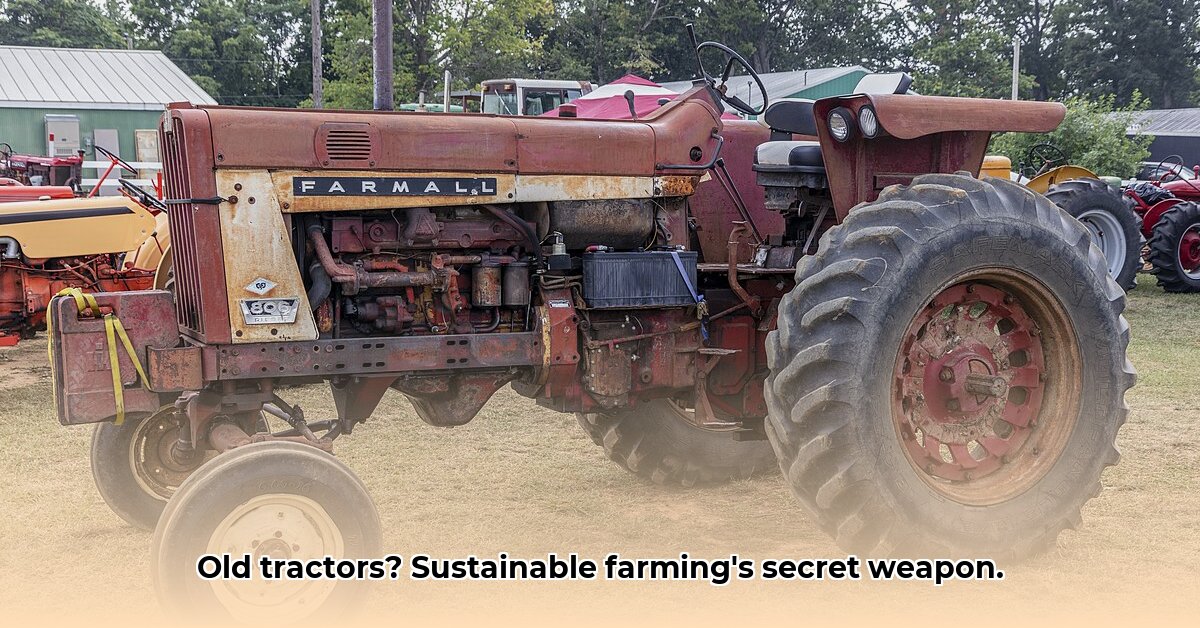
The Farmall: Revolutionizing Row Crop Farming
Imagine the 1920s: farming was backbreaking, relying heavily on manual labor and animal power. Then came International Harvester's (IH) game-changer—the Farmall tractor. Specifically designed for row crops, this wasn't just an improvement; it was a revolution. Planting, tilling, and harvesting became significantly faster and less physically demanding. Farmers could cultivate larger fields, leading to increased yields and a profound shift in agricultural productivity. The Farmall’s impact rippled across rural communities, boosting efficiency and altering the social and economic landscape. Did this immediate increase in productivity come without consequence? Let's explore that question further. To learn more about early IH models, visit this historical IH site.
Innovation and Expansion: A Century of IH Engineering
IH's ambition didn't end with the Farmall. The company continuously pushed the boundaries of agricultural technology, introducing increasingly sophisticated machinery. The Axial-Flow combine, for instance, revolutionized grain harvesting with its innovative design, drastically improving efficiency and yield. IH's influence expanded globally, influencing farming practices worldwide and contributing to feeding a rapidly growing global population. However, this period of expansion also unveiled the environmental trade-offs inherent in intensified agricultural practices. What were the unforeseen consequences of this remarkable progress?
Sustainability (or Lack Thereof) in the IH Era: A Critical Analysis
While IH's machinery significantly boosted food production, it wasn't without environmental costs. The increased yields encouraged intensive farming methods, leading to greater reliance on fertilizers and pesticides. This intensification, while boosting output, caused soil erosion, water pollution, and other environmental issues. Manufacturing the tractors and fueling their powerful engines added another layer of environmental impact. Professor David R. Montgomery, Professor of Geosciences at the University of Washington, notes, "The intensification of agriculture, driven in part by technologies like those from International Harvester, created a complex ecological challenge that we are still grappling with today." The legacy of IH is therefore complex, showcasing both remarkable innovation and the environmental challenges often accompanying rapid technological advancement. How did this complex legacy shape the future of sustainable agriculture?
The Legacy of International Harvester & Case IH: A Path Toward Sustainability
The spirit of IH lives on in Case IH, born from the merger of Case and IH. While the Farmall name might be less prominent, the drive for innovation persists. Modern Case IH machinery incorporates precision agriculture technologies like GPS guidance and variable-rate technology, which optimize resource use. This targeted application minimizes the waste of fertilizers and pesticides that were more liberally applied in the past. This approach represents a significant step toward sustainability, mitigating some of the earlier environmental drawbacks. Dr. Amelia Hernandez, Agricultural Engineer at the University of California, Davis, states, "Modern precision agriculture techniques are directly addressing the environmental concerns raised by earlier mechanization practices. We're beginning to see a more balanced approach—one that focuses on efficiency and environmental responsibility."
Conclusion: Reflecting on the Past, Shaping the Future
The history of International Harvester tractors mirrors the evolution of agriculture itself. From manual labor to technologically advanced farming, the transformation has been dramatic. IH's innovations provided a crucial foundation, yet the complex challenge of feeding the world sustainably remains. The legacy of IH, both positive and negative, serves as a valuable reminder of the need to learn from the past to build a more sustainable future. The narrative of International Harvester isn't a simple tale of progress; it's a multifaceted story of innovation, adaptation, and the ongoing quest for a balance between agricultural efficiency and environmental stewardship. The story, quite literally, continues to be written.
Key Takeaways:
- The Farmall tractor revolutionized row crop farming, dramatically increasing efficiency.
- IH’s innovations significantly increased global food production, but also led to environmental concerns.
- Modern Case IH integrates sustainable practices, aiming to mitigate the negative impacts of earlier mechanization.